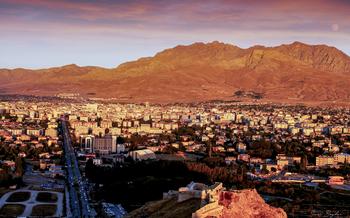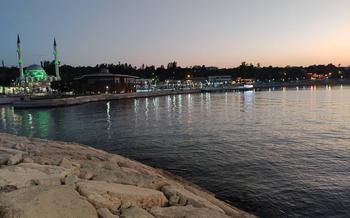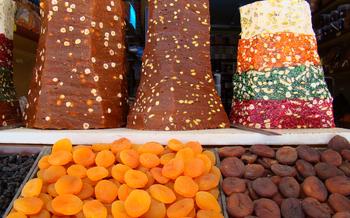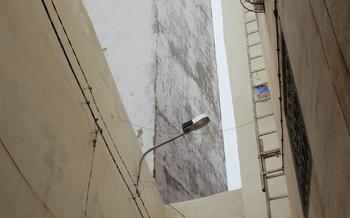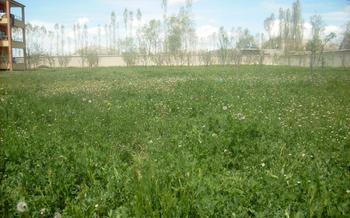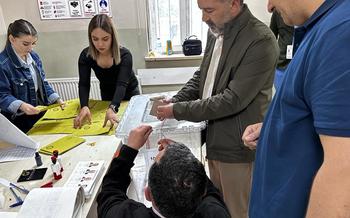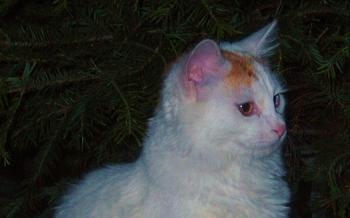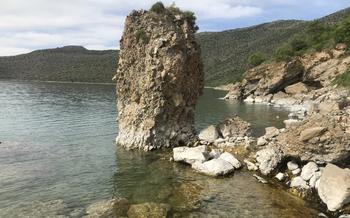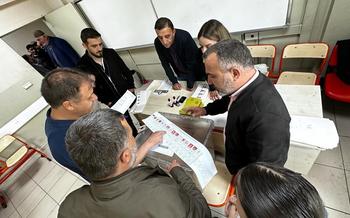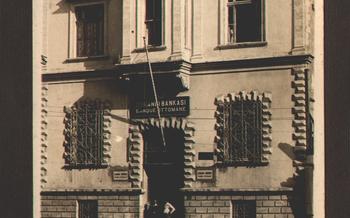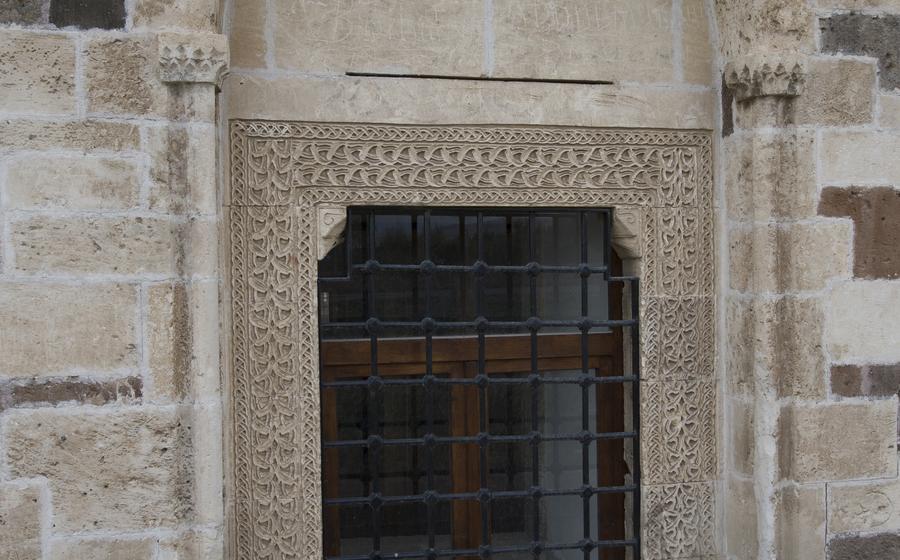
Kaya Çelebi Mosque
- Historical Significance:
- Architectural Marvel
- Interior Beauty
- Prayer Hall
- Courtyard and Garden
- Historical Context
- Cultural Significance
- Religious Importance
- Restoration and Preservation
- Visitor Information
- Local Traditions and Customs:
- Nearby Attractions
- Local Cuisine and Dining:
- Accommodation and Hotels
- Insider Tip: Unveiling the Hidden Gem of the Kaya Çelebi Mosque
Historical Significance:
The Kaya Çelebi Mosque stands as a testament to the rich history and cultural significance of the city of Van. Built in the 17th century during the reign of the Seljuk dynasty, this magnificent mosque has played a prominent role in the religious, cultural, and architectural landscape of the region for over four centuries. Its unique blend of Islamic and Anatolian architectural styles, intricate tilework, and captivating interior design make it a true masterpiece of Islamic architecture and a symbol of Van's rich heritage. As a prominent landmark, the Kaya Çelebi Mosque continues to captivate visitors and pilgrims alike, offering a glimpse into the city's vibrant past.
Architectural Marvel
The Kaya Çelebi Mosque stands as a testament to the fusion of Islamic and Anatolian architectural styles. Its intricate and harmonious design is a reflection of the region's cultural heritage. The mosque's facade boasts a series of pointed arches and decorative bands, reminiscent of traditional Islamic architecture. Geometric patterns and floral motifs adorn the exterior walls, adding a touch of elegance and symmetry.
The mosque's most striking feature is its majestic dome. Covered in vibrant turquoise tiles, the dome rises elegantly above the surrounding buildings. The dome's interior is equally stunning, adorned with intricate tilework and Quranic verses. The mosque's minarets, slender and graceful, pierce the sky and serve as a beacon for worshippers and visitors alike.
The interior of the mosque is a symphony of artistic and architectural wonders. The prayer hall is supported by a series of massive columns, topped with intricate capitals. The walls are lined with vibrant tilework, featuring geometric patterns, floral motifs, and verses from the Quran. The mihrab, the niche indicating the direction of Mecca, is adorned with exquisite calligraphy and intricate carvings, highlighting its spiritual significance.
The Kaya Çelebi Mosque is not just a place of worship but also a testament to the architectural brilliance and cultural heritage of the region. Its stunning design, blending Islamic and Anatolian elements, makes it a must-visit for anyone interested in history, architecture, and culture.
Interior Beauty
The interior of the Kaya Çelebi Mosque is a testament to the exquisite craftsmanship and artistry that went into its construction. The walls are adorned with vibrant tilework, each tile meticulously hand-painted with intricate patterns and vibrant colors. The tiles depict scenes from Islamic history, verses from the Quran, and geometric designs that create a mesmerizing visual display.
The mosque's interior is also home to stunning calligraphy, with verses from the Quran and the names of Allah and the Prophet Muhammad inscribed in elegant Arabic script. The calligraphy is a testament to the skill and devotion of the artisans who created it, adding a layer of spiritual significance to the mosque's interior.
Intricate carvings and reliefs further embellish the mosque's interior, adding depth and texture to the space. These carvings depict a variety of motifs, including floral patterns, geometric designs, and scenes from nature, creating a sense of harmony and balance.
The overall effect of the mosque's interior is one of awe and tranquility. The vibrant colors, intricate details, and spiritual atmosphere create a space that is both visually stunning and deeply moving, inviting visitors to contemplation and reflection.
Prayer Hall
At the heart of the Kaya Çelebi Mosque lies the awe-inspiring prayer hall, capable of accommodating thousands of worshippers within its sacred embrace. The air reverberates with a sense of devotion as the faithful gather, united in their prayers.
The mihrab, the sacred niche indicating the direction of Mecca, commands attention with its intricate tilework and delicate calligraphy. It serves as a beacon, guiding the worshippers towards spiritual alignment. The minbar, an elevated pulpit, stands as a symbol of authority and guidance, from which the imam delivers sermons and leads the congregation in prayer.
The spacious prayer hall exudes an atmosphere of tranquility, providing a sanctuary for reflection and communion with the divine. Rows of intricately designed carpets adorn the floor, creating a vibrant tapestry of colors and patterns. The soft glow of natural light filtering through the stained-glass windows casts an ethereal aura, enhancing the spiritual ambiance.
The prayer hall serves not only as a place of worship but also as a communal space where the faithful gather to strengthen their bonds of brotherhood and sisterhood. It is here that they share moments of contemplation, supplication, and spiritual growth, fostering a deep sense of community and belonging.
Courtyard and Garden
As you step into the courtyard of the Kaya Çelebi Mosque, you'll be greeted by a serene and tranquil ambiance that invites you to pause and reflect. The lush greenery, meticulously manicured lawns, and vibrant flowers create a picturesque oasis amidst the bustling city. The courtyard is adorned with elegant fountains that gently cascade, adding a soothing melody to the peaceful atmosphere.
Take a stroll along the intricate pathways that meander through the garden, leading you to hidden corners and secluded nooks perfect for quiet contemplation. The courtyard's design incorporates traditional Islamic elements, such as geometric patterns and water features, which harmonize beautifully with the surrounding architecture.
Whether seeking a moment of respite from the city's hustle and bustle or engaging in spiritual reflections, the courtyard of the Kaya Çelebi Mosque offers a tranquil sanctuary for visitors to find solace and inner peace.
Historical Context
The Kaya Çelebi Mosque stands as a testament to the rich historical tapestry of Van. Its construction dates back to the Seljuk dynasty, a period known for its architectural prowess and cultural achievements. The Seljuks, who ruled over a vast empire stretching from Anatolia to Central Asia, played a pivotal role in shaping the region's history and leaving behind a legacy of magnificent structures.
The mosque's construction was commissioned by the Seljuk ruler, Sultan Alaeddin Kayqubad I, in the 13th century. It was built as part of a broader effort to establish and consolidate Seljuk rule in the region. The mosque served as a symbol of the dynasty's power and authority, reinforcing its political and religious influence.
Throughout the centuries, the Kaya Çelebi Mosque has witnessed and survived numerous political and cultural shifts. It has remained a steadfast landmark amidst changing empires and regimes, serving as a continuous thread connecting the city's past to its present. Despite facing various challenges and undergoing renovations over time, the mosque has retained its original architectural integrity and continues to stand as a proud symbol of Van's rich historical heritage.
Cultural Significance
The Kaya Çelebi Mosque holds immense cultural significance for the city of Van as a symbol of its rich religious heritage and a testament to its enduring Islamic traditions. It represents a fusion of Islamic architecture with Anatolian influences, reflecting the city's diverse cultural tapestry. The mosque's presence has shaped the city's identity, becoming an iconic landmark and a source of pride for the local community. As a place of worship, learning, and community gatherings, it serves as a hub for social and cultural interactions, fostering a sense of unity and belonging among the residents of Van.
Religious Importance
The Kaya Çelebi Mosque holds immense religious significance as a sacred place of worship for Muslims. Its spiritual aura and serene atmosphere attract worshippers from all over the region. The mosque serves as a central hub for religious practices, fostering a deep connection between the community and their faith.
The mosque's spacious prayer hall accommodates thousands of worshippers, providing a communal space for Muslims to come together and perform their daily prayers. The intricate mihrab, a niche indicating the direction of Mecca, and the elevated minbar, a pulpit used for delivering sermons, stand as focal points of the prayer hall, adding to its spiritual grandeur.
Beyond daily prayers, the Kaya Çelebi Mosque plays a vital role in promoting Islamic teachings and spirituality. Renowned scholars and religious figures deliver lectures and host discussions, fostering a deeper understanding of Islamic principles and encouraging spiritual growth among the community. The mosque also serves as a center for Islamic education, offering classes and workshops on various aspects of the faith, nurturing a new generation of knowledgeable and dedicated Muslims.
During religious festivals and observances, such as Ramadan and Eid, the Kaya Çelebi Mosque transforms into a vibrant hub of activity. The mosque's courtyard and prayer hall overflow with worshippers, who gather to celebrate and express their devotion. The air fills with the sound of prayers, recitations, and joyous greetings, creating a truly immersive and spiritual experience.
Restoration and Preservation
Over the centuries, the Kaya Çelebi Mosque has undergone several restoration and preservation efforts to maintain its historical integrity and architectural beauty. The most significant restoration project was undertaken in the early 20th century, when the mosque was in a state of disrepair. During this restoration, experts carefully repaired damaged sections of the mosque, restored intricate tilework, and reinforced structural elements to ensure its stability.
One of the challenges faced during the restoration process was preserving the mosque's original features while incorporating modern techniques to improve its resilience. The restoration team meticulously studied historical records and consulted with experts to ensure that the mosque's authenticity was maintained.
The successful restoration of the Kaya Çelebi Mosque stands as a testament to the importance of preserving cultural heritage. By preserving this architectural gem, future generations can continue to appreciate its beauty, learn about its historical significance, and experience the spiritual atmosphere within its walls.
Visitor Information
The Kaya Çelebi Mosque welcomes visitors from all walks of life to explore its architectural beauty and spiritual significance. To ensure a respectful and enriching visit, please take note of the following information:
-
Opening Hours: The mosque is open to visitors daily, except during prayer times, which typically occur five times a day. It is advisable to check with local sources or the mosque's official website for specific prayer times.
-
Dress Code: As a place of worship, the mosque requires visitors to dress modestly and respectfully. For women, it is recommended to cover their hair and wear loose-fitting clothing. Men should avoid wearing shorts or sleeveless shirts.
-
Accessibility: The mosque is accessible to visitors of all abilities. Wheelchair ramps and elevators are available to ensure that everyone can comfortably explore the mosque's interior and courtyard.
-
Special Events: The mosque occasionally hosts special events, such as religious festivals, exhibitions, or educational programs. Visitors are encouraged to inquire about these events in advance to enhance their experience.
-
Respectful Behavior: While visiting the mosque, it is important to maintain a respectful and mindful attitude. Please be mindful of the worshippers and avoid disturbing them during their prayers. Refrain from loud conversations or disruptive behavior.
Local Traditions and Customs:
The Kaya Çelebi Mosque is not just a religious landmark but also an integral part of the local culture and traditions in Van. Visitors to the mosque should be mindful of certain customs and practices observed by the local community.
One unique tradition associated with the mosque is the annual "Hıdırellez" festival, which takes place on May 6th. During this festival, people gather at the mosque to celebrate the arrival of spring with traditional music, dancing, and feasts. Visitors are welcome to join in the festivities and experience the vibrant local culture firsthand.
It is important to dress respectfully when visiting the mosque, covering shoulders and knees. Women may also choose to cover their heads as a sign of respect. Visitors should also be mindful of noise levels and avoid causing any disturbance during prayer times.
By observing local traditions and customs, visitors can show their respect for the local community and enhance their overall experience at the Kaya Çelebi Mosque.
Nearby Attractions
After immersing yourself in the spiritual and architectural wonders of the Kaya Çelebi Mosque, take advantage of the opportunity to explore other captivating attractions nearby. Embrace the city's rich history at the Van Museum, where you can delve into the region's fascinating past through captivating exhibits and artifacts. Immerse yourself in the beauty of Lake Van, the largest lake in Turkey, offering stunning views and a chance to explore its unique ecosystem. For a glimpse into traditional Armenian culture, visit the Armenian Church of the Holy Cross, showcasing exquisite architecture and a poignant glimpse into the city's diverse heritage. Discover the charm of Van Castle, perched atop a hill overlooking the city, offering panoramic vistas and a glimpse into the region's strategic importance throughout history. With so much to explore, Van promises an unforgettable journey through history, culture, and natural wonders.
Local Cuisine and Dining:
When exploring the wonders of the Kaya Çelebi Mosque, be sure to tantalize your taste buds with the delectable offerings of Van's culinary scene. The city boasts an array of restaurants and eateries, each offering a unique culinary journey. Savor the flavors of traditional Turkish cuisine, known for its rich blend of spices, fresh ingredients, and mouthwatering kebabs. Indulge in regional specialties such as Van's famous "Van kahvaltısı," a hearty breakfast spread featuring local cheeses, honey, and freshly baked bread. Don't miss the opportunity to try "Murtuğa," a unique dish made from sun-dried apricots, or savor the delights of "İskenderun," a succulent lamb dish served over crispy pide bread. As you explore the city's culinary landscape, don't forget to sample the local street food, where you'll find an array of flavors and aromas that will leave you wanting more.
Accommodation and Hotels
When planning your stay in Van, you'll find a range of accommodation options near the Kaya Çelebi Mosque to suit different preferences and budgets. Whether you seek a luxurious hotel experience or a cozy guesthouse, you'll find something to your liking.
For those seeking a touch of history and tradition, consider staying in one of the restored Ottoman-era mansions turned into boutique hotels. These charming properties offer a unique blend of comfort and heritage, immersing you in the city's rich past.
If you prefer modern amenities and convenience, several contemporary hotels are located within walking distance of the mosque. These hotels often boast stunning views of the city and offer a range of facilities, including fitness centers, swimming pools, and rooftop terraces.
For a more budget-friendly option, consider staying in one of the many guesthouses or hostels near the mosque. These accommodations provide basic yet comfortable rooms at affordable prices, making them ideal for backpackers and budget travelers.
When booking your accommodation, remember to consider the time of year and the availability of rooms. Van experiences a surge in tourism during the summer months, so it's advisable to book your stay well in advance to avoid disappointment.
Insider Tip: Unveiling the Hidden Gem of the Kaya Çelebi Mosque
As you explore the Kaya Çelebi Mosque, take a moment to venture to the rooftop terrace, accessible via a discreet staircase. This hidden gem offers a breathtaking panoramic view of the city of Van, showcasing its vibrant tapestry of landscapes, from the shimmering shores of Lake Van to the majestic peaks of the Taurus Mountains. Capture the essence of Van as the cityscape unfolds before your eyes, creating a lasting memory of your visit to this architectural masterpiece.
